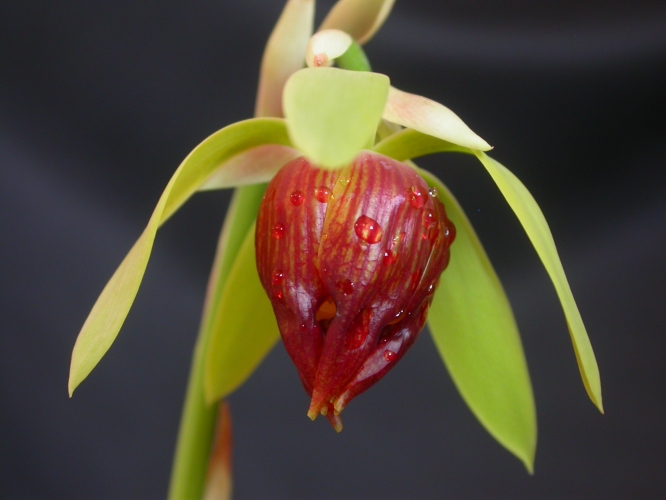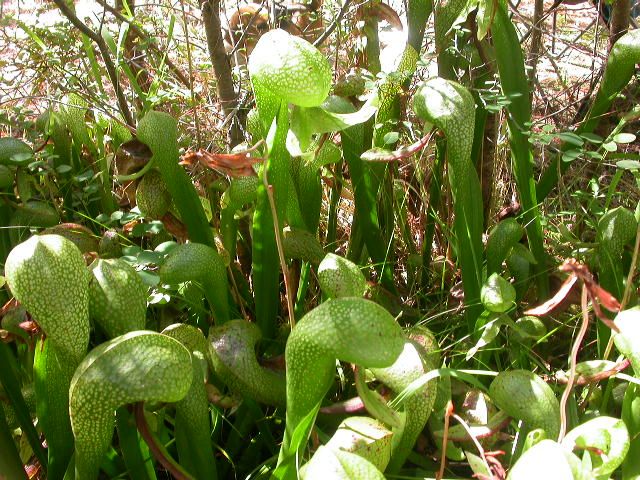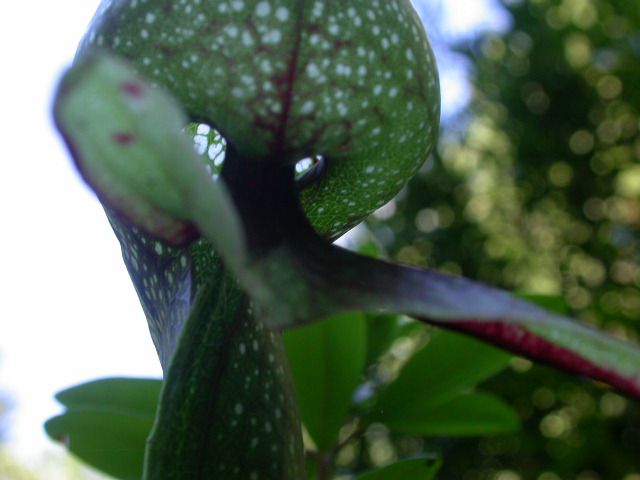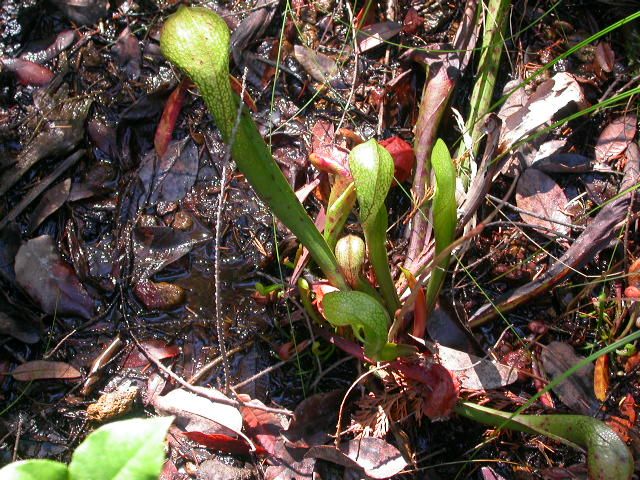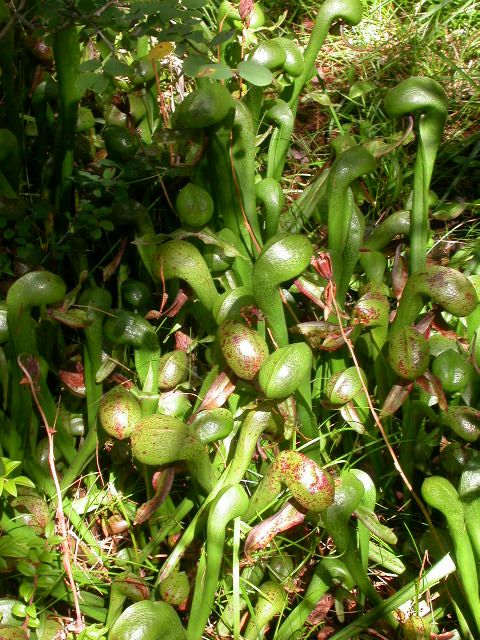
Darlingtonia californica, also called the California Pitcher plant or Cobra Lily, is a carnivorous plant, the sole member of the genus Darlingtonia in the family Sarraceniaceae. It is native to Northern California and Oregon, growing in bogs and seeps with running water. This plant is designated as uncommon due to its rarity in the field. The name Cobra Lily stems from the resemblance of its tubular leaves to a rearing cobra, complete with a forked leaf - ranging from yellow to purplish-green - that resemble a serpent's "tongue."
The Darlingtonia californica can be one of the most difficult carnivorous plants to keep in cultivation, but this depends on the area in which they are cultivated. They prefer cool to warm day-time temperatures and cold or cool night-time temperatures. The problem is that cobra lilies typically grow in bogs or stream banks that are fed by cold mountain water, and grow best when the roots are kept cooler than the rest of the plant. It is best to mimic these conditions in cultivation, and water the plants with cold, purified water. On hot days, it helps to place ice cubes of purified water on the soil surface. They prefer sunny conditions if in a humid, warm location, and prefer part-shade if humidity is low or fluctuates often. Plants can adapt to low humidity conditions, but optimum growth occurs under reasonable humidity.
Growing cobra lilies from seed is extremely slow and cobra seedlings are difficult to maintain, so these plants are best propagated from the long stolons they grow in late winter and spring. When a minute cobra plant is visible at the end of the stolon (usually in mid to late spring), the whole stolon may be cut into sections a few inches long, each with a few roots attached. Lay these upon cool, moist, shredded long-fibered sphagnum moss and place in a humid location with bright light. In many weeks, cobra plants will protrude from each section of stolon.
Like many other carnivorous plants, cobra lilies require a cold winter dormancy in order to live long-term. Plants die down to their rhizomes in frigid winters and will maintain their leaves in cool winters during their dormancy period. This period lasts from 3 to 5 months during the year, and all growth stops. As spring approaches, mature plants may send up a single, nodding flower, and a few weeks later the plant will send up a few large pitchers. The plant will continue to produce pitchers throughout the summer, however much smaller than the early spring pitchers.
Many carnivorous plant enthusiasts have succeeded in cultivating these plants, and have developed three new color morphs: all green, all red, and red-green bicolor.
Wild plants are all green in moderate light and bicolor in intense sunlight.
